Spotting bed bugs early can make all the difference in controlling an infestation. But how big are bed bugs, really? Their size varies depending on their life stage, from nearly invisible eggs to engorged adults. Accurately identifying bed bugs allows you to distinguish them from other pests and address the problem before it escalates.
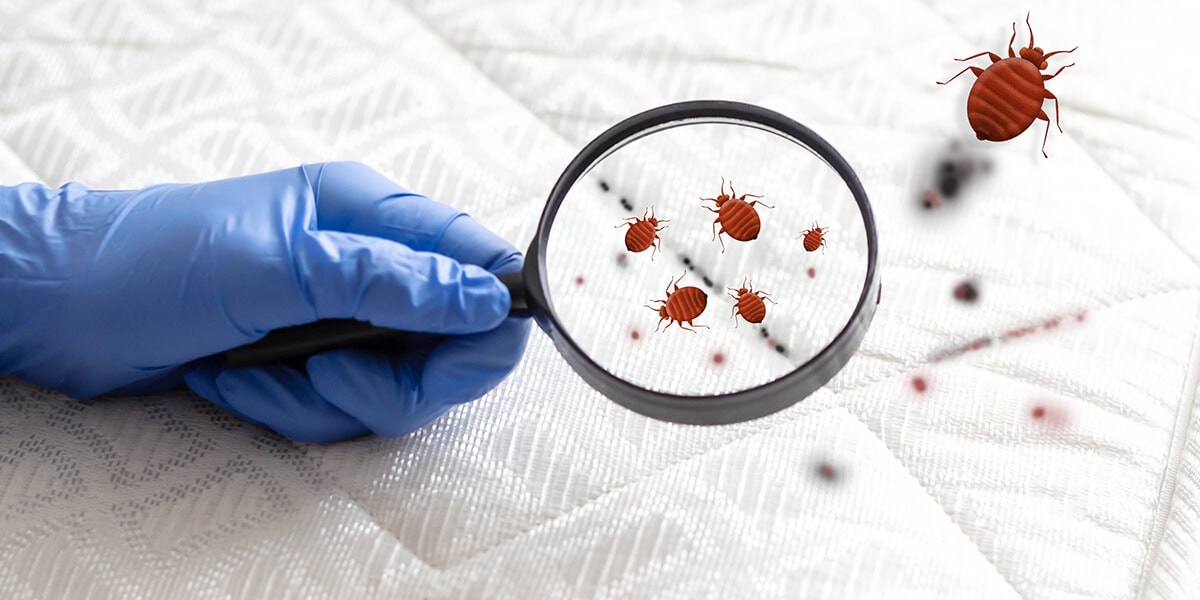
This guide will break down the exact sizes of bed bugs, their bites, and their eggs, giving you a clearer picture of what to look for.
Bed Bug Life Cycle and Growth
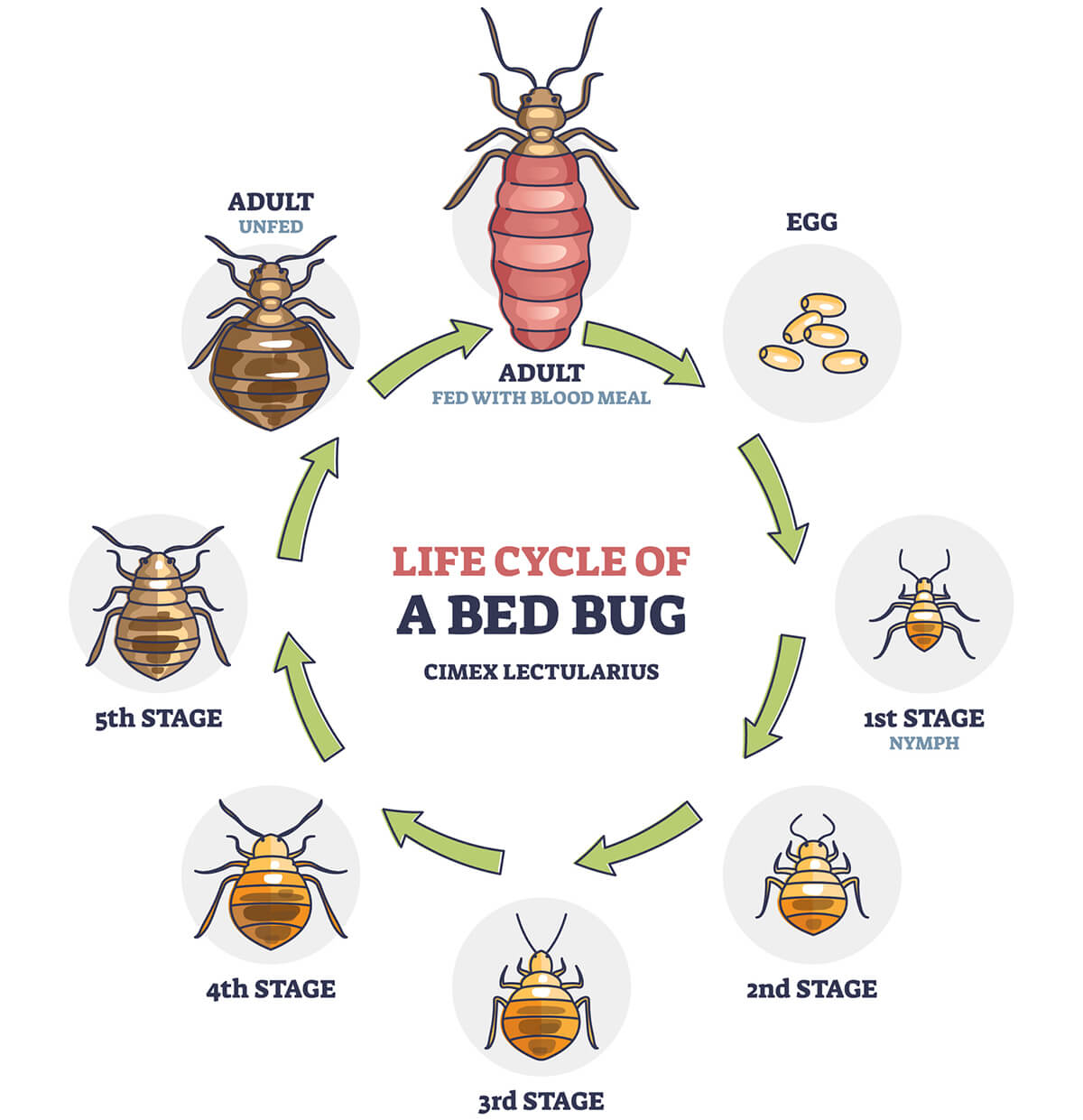
Bed bugs start their journey as tiny, hidden eggs before gradually growing into visible, blood-feeding adults. Tracking their size through each stage offers insight into their development and helps in pinpointing infestations early. When these signs become apparent, professional bed bug exterminators can step in to effectively manage and eliminate the infestation.
Size of Bed Bug Eggs
Bed bug eggs are quite small, typically measuring about 1 millimetre in length, which is roughly the size of a pinhead. They are usually oval-shaped and translucent or pearly white, making them difficult to spot with the naked eye, especially on light-coloured surfaces.
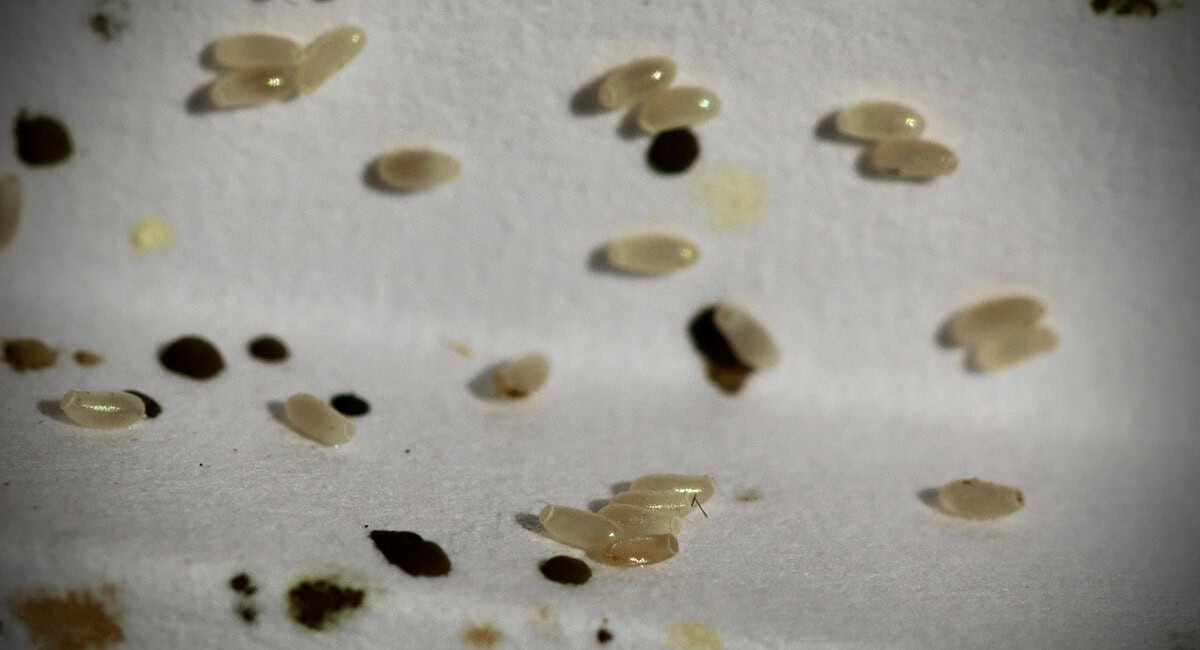
These eggs are often laid in clusters and are sticky, allowing them to adhere to surfaces like cracks and crevices near sleeping areas. Given how big bed bug eggs are, their small size and pale colour can make them challenging to detect without the use of a magnifying glass or a flashlight.
Size of Bed Bug Nymphs
If bed bug eggs are tiny, you may be wondering how big bed bug nymphs are in comparison. Well, bed bug nymphs are quite small, especially when they first hatch. At their earliest stage (1st instar), they measure about 1.5 millimetres. As they progress through their five developmental stages, known as instars, they grow larger with each moult. By the time they reach their final nymph stage (5th instar), they can be as large as 4.5 millimetres.
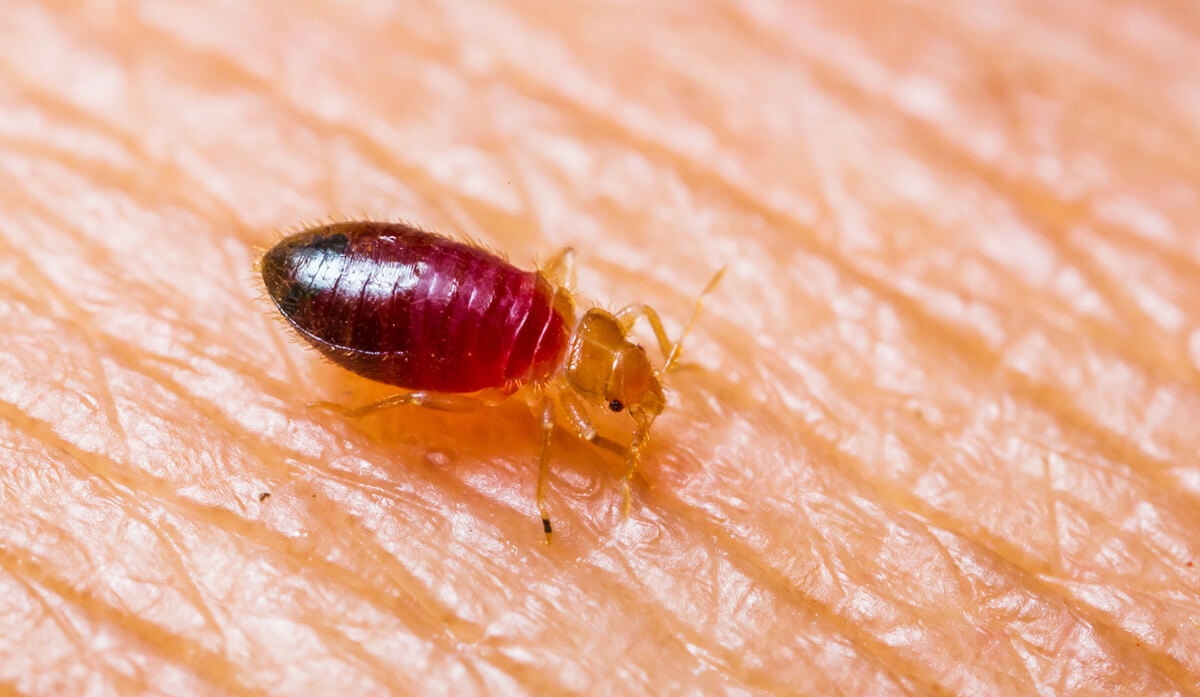
Nymphs are typically translucent or whitish-yellow when they first hatch, but after feeding on blood, their bodies take on a reddish tint due to the blood visible inside them. This colour change is a key indicator of their feeding habits.
Nymphs are active and require a blood meal before each moult, which means they feed more frequently than adults. Despite their small size, they are just as capable of biting and feeding on human blood as adult bed bugs.
Size of Adult Bed Bugs
Adult bed bugs typically measure between 5 to 7 millimetres in length, but how big do bed bugs get after feeding? They can swell up to 9 millimetres as their bodies elongate and become more cylindrical. This size variation makes them easier to spot, but their preference for hiding in tight spaces means they often remain out of sight.
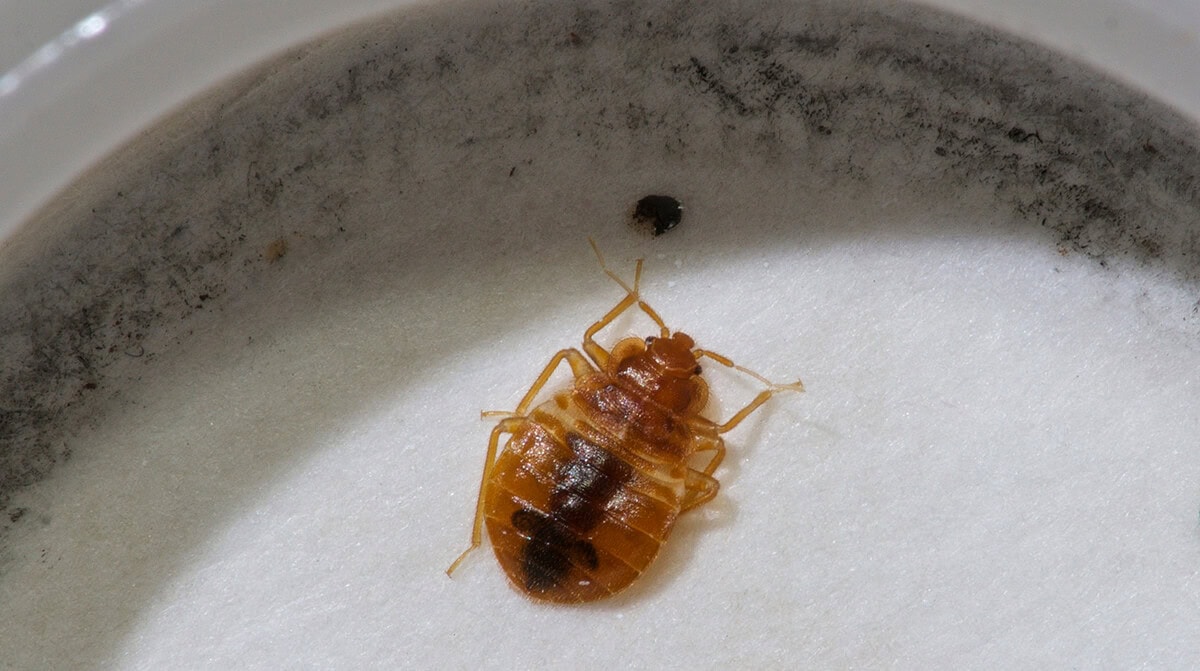
Bed bugs don’t just stick to your mattress; they often seek out unexpected places to hide. You might find them inside electrical outlets, hidden in the pages of old books, or tucked away behind loose wallpaper on your walls. These clever pests take advantage of any tight, dark space, making them difficult to detect.
Comparing Bed Bugs and Fleas
An NPMA survey found that bed bugs are frequently mistaken for other pests. In fact, 84% of pest control experts report that when they are initially called to address a different pest problem, they often find bed bugs to be the actual issue upon further investigation. Fleas, in particular, are the pests most commonly confused with bed bugs during these pest control inspections.1

Compared to fleas, adult bed bugs are generally larger. Fleas are smaller, ranging from about 1.5 to 3.3 millimetres. Bed bugs have a flat, oval-shaped body, which helps them hide in small cracks and crevices near sleeping areas. Fleas, on the other hand, have narrow, laterally compressed bodies designed for moving through the fur of animals.
Another key difference is their movement; fleas are known for their ability to jump impressive distances, while bed bugs move slowly and rely on crawling to get around.
All About Bed Bug Bites
Dealing with bed bug bites can be a nightmare. Their bites can lead to severe itching, swelling, and even secondary infections if scratched excessively. The psychological impact is just as significant, with many people experiencing heightened stress and insomnia due to the constant fear of being bitten again.
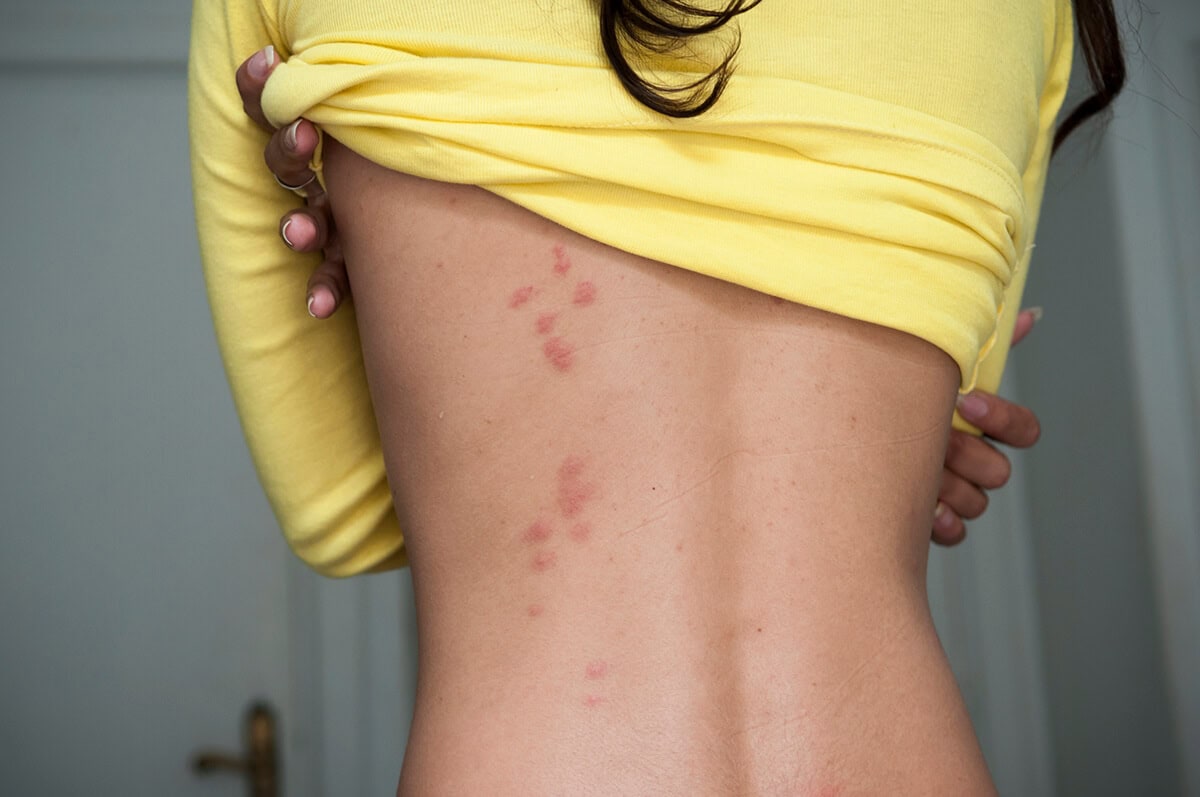
Pets aren’t immune to the torment either. Dogs and cats can suffer from bed bug bites, leading to similar symptoms like irritation, itching, and discomfort. Unfortunately, our furry friends can’t tell us where it hurts, making it even more challenging to manage their pain.
At Bed Bug Exterminator Pro, we use highly effective heat treatments that target bed bugs at every stage of life. Our process is strengthened by our K9 inspection units—specially trained dogs with an exceptional sense of smell that can detect bed bugs with far greater accuracy than human inspections alone.
How big are bed bug bites?
Bed bug bites can vary in size, typically ranging from about 2 to 4 millimetres in diameter, but the exact size can depend on your skin’s sensitivity and the level of inflammation. For some people, the bites might only be small red bumps, while for others, they can become larger, itchy welts or even fluid-filled bumps (weals) that can grow up to 2 inches across.
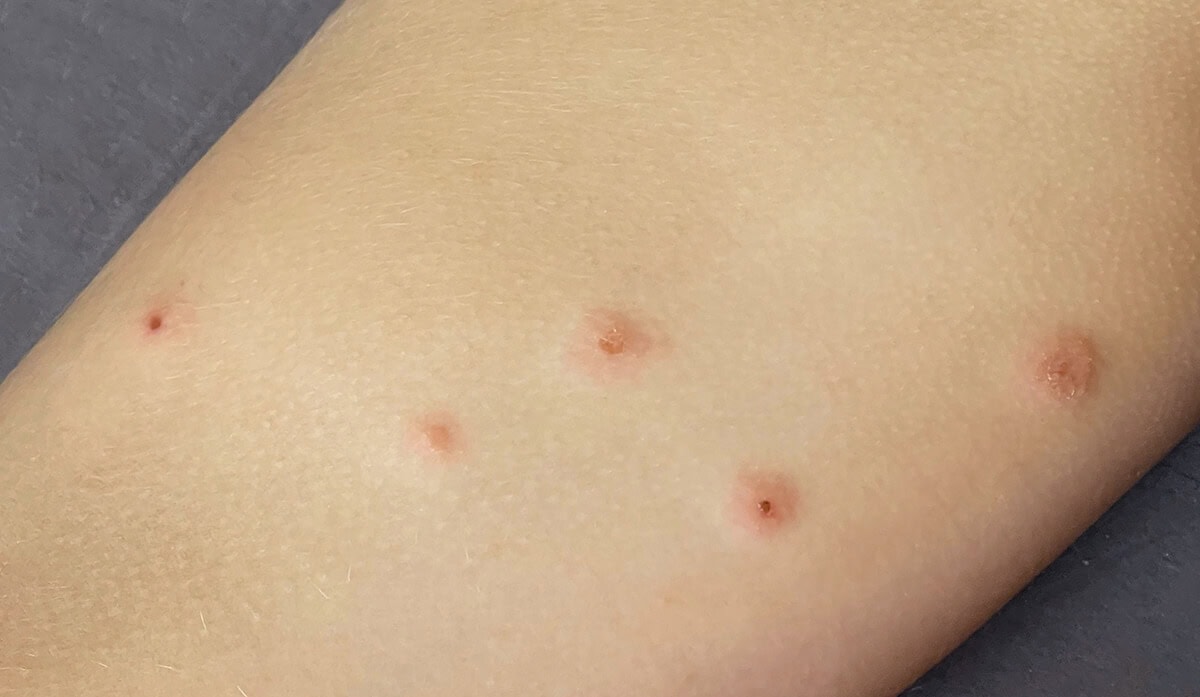
The size of the bite is influenced by how your body reacts to the bed bug’s saliva, with some people experiencing more intense reactions than others.
How long does it take for bed bug bites to show up?
Bed bug bites can take anywhere from a few hours to several days to appear, depending on the individual. While some people may notice the bites and itching almost immediately, others may experience delayed reactions, with welts not showing up until a few days later.
Additionally, about 30% of people don’t react to bed bug bites at all, with older people being the least reactive, meaning they might not notice any visible signs of the bites even if they were bitten.2
How can I tell the difference between bed bug bites and other insect bites?
Bed bug bites are often mistaken for bites from other insects, such as mosquitoes or fleas. However, bed bug bites typically form a straight line or cluster of welts and are most commonly found on areas of the body exposed while sleeping, such as the face, neck, arms, and hands. Identifying bed bug bites can be challenging without other signs of infestation, like seeing the bugs themselves or finding their droppings.
Professional Bed Bug Extermination You Can Count On
When DIY solutions fall short (as they often do), professional intervention becomes necessary to effectively handle a bed bug infestation and ensure complete eradication. At Bed Bug Exterminator Pro, we specialize in safe, effective, and environmentally friendly bed bug treatment services to rid your home of bed bugs for good.

With our industry-leading techniques and commitment to affordable pricing, you can trust us to restore peace to your home. If you suspect an infestation, don’t hesitate to reach out for a thorough inspection and treatment. Connect with us to discuss your options!
References:
- National Pest Management Association. “Bugs Without Borders Research.” PestWorld.org, 4 June 2018, https://www.pestworld.org/multimedia-center/press-releases/pest-control-professionals-see-summer-spike-in-bed-bug-calls/. Accessed 23 August 2024.
- Wong, Kate. “Bed Bug Confidential: An Expert Explains How to Defend against the Dreaded Pests.” Scientific American, 23 January 2012, https://www.scientificamerican.com/article/bed-bug-expert-explains-defend-yourself/. Accessed 23 August 2024.



